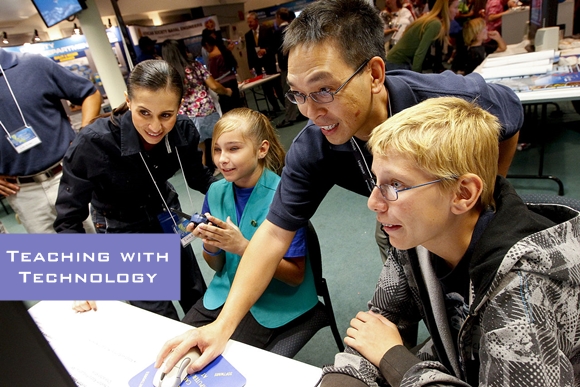In today’s interconnected world, technology has revolutionized the way we teach and learn languages. For TESOL teachers looking to start a career teaching English abroad, embracing technology can open doors to innovative teaching methods, enhanced classroom experiences, and global opportunities. Here are five of the best ways to integrate technology into your career as a TESOL teacher and make a lasting impact.
1. Leverage Online Platforms to Find Opportunities
The first step to teaching English abroad is securing a position. Technology simplifies this process by connecting teachers with schools and organizations worldwide. Popular platforms like Teach Away, GoAbroad, and TESOL’s job board allow you to browse job openings, submit applications, and even attend virtual interviews. Some platforms also provide reviews from past teachers, helping you make informed decisions about where to teach.
Pro Tip: Optimize your professional profile on LinkedIn and include keywords like “TESOL-certified” and “English teacher abroad” to attract recruiters.
2. Use Digital Resources for Lesson Planning
Technology provides an abundance of resources to craft engaging lesson plans tailored to your students’ needs. Websites like BusyTeacher, ESL Library, and TeachThis offer downloadable worksheets, activities, and lesson plans. Apps like Canva can help you design visually appealing materials, while platforms like Quizlet enable you to create interactive flashcards for vocabulary practice.
Fun Fact: Studies show that visually engaging materials can increase student retention by up to 65%.
3. Teach with Interactive Tools and Apps
Classroom technology enhances the learning experience, making it more interactive and fun. Tools like Kahoot and Mentimeter enable you to create live quizzes and polls, fostering student participation. Language-learning apps like Duolingo, Rosetta Stone, and Babbel can supplement lessons by offering personalized language practice.
For virtual classrooms, platforms like Zoom and Microsoft Teams allow you to integrate tools like virtual whiteboards and breakout rooms for group discussions, creating a dynamic online learning environment.
Pro Tip: Gamify your lessons using interactive games to motivate students and track their progress.
4. Incorporate Video and Audio for Immersive Learning
Video and audio tools bring real-world English into the classroom, immersing students in authentic contexts. Platforms like YouTube provide access to educational channels, TED Talks, and language tutorials. You can also record and edit your own videos using tools like iMovie or Adobe Premiere Rush to deliver personalized lessons.
Podcasts are another excellent resource for developing listening skills. Encourage students to explore podcasts like “ESL Pod” or “The English We Speak,” which feature practical language tips and conversations.
Fun Fact: Listening to podcasts or watching videos with subtitles can improve language comprehension by 30%.
5. Stay Connected with Professional Development Communities
Technology allows you to continuously grow as an educator by connecting with professional communities. Join online forums like Reddit’s r/TEFL or participate in webinars hosted by organizations like TESOL International Association. These platforms provide valuable insights, teaching strategies, and networking opportunities.
Social media groups and blogs dedicated to English teaching abroad are also excellent resources for sharing experiences and discovering innovative teaching techniques.
Pro Tip: Follow hashtags like #TESOL, #EdTech, and #TeachAbroad on social media to stay updated on the latest trends and tools.
Conclusion
Starting a career teaching English abroad with technology is an exciting and rewarding journey. By leveraging online platforms, utilizing digital resources, and integrating interactive tools, you can create dynamic learning experiences for your students. Incorporating video and audio adds depth to your teaching, while professional communities keep you connected and inspired. With technology as your ally, you’re equipped to make a global impact as a TESOL educator, bringing the English language to life for learners around the world.



